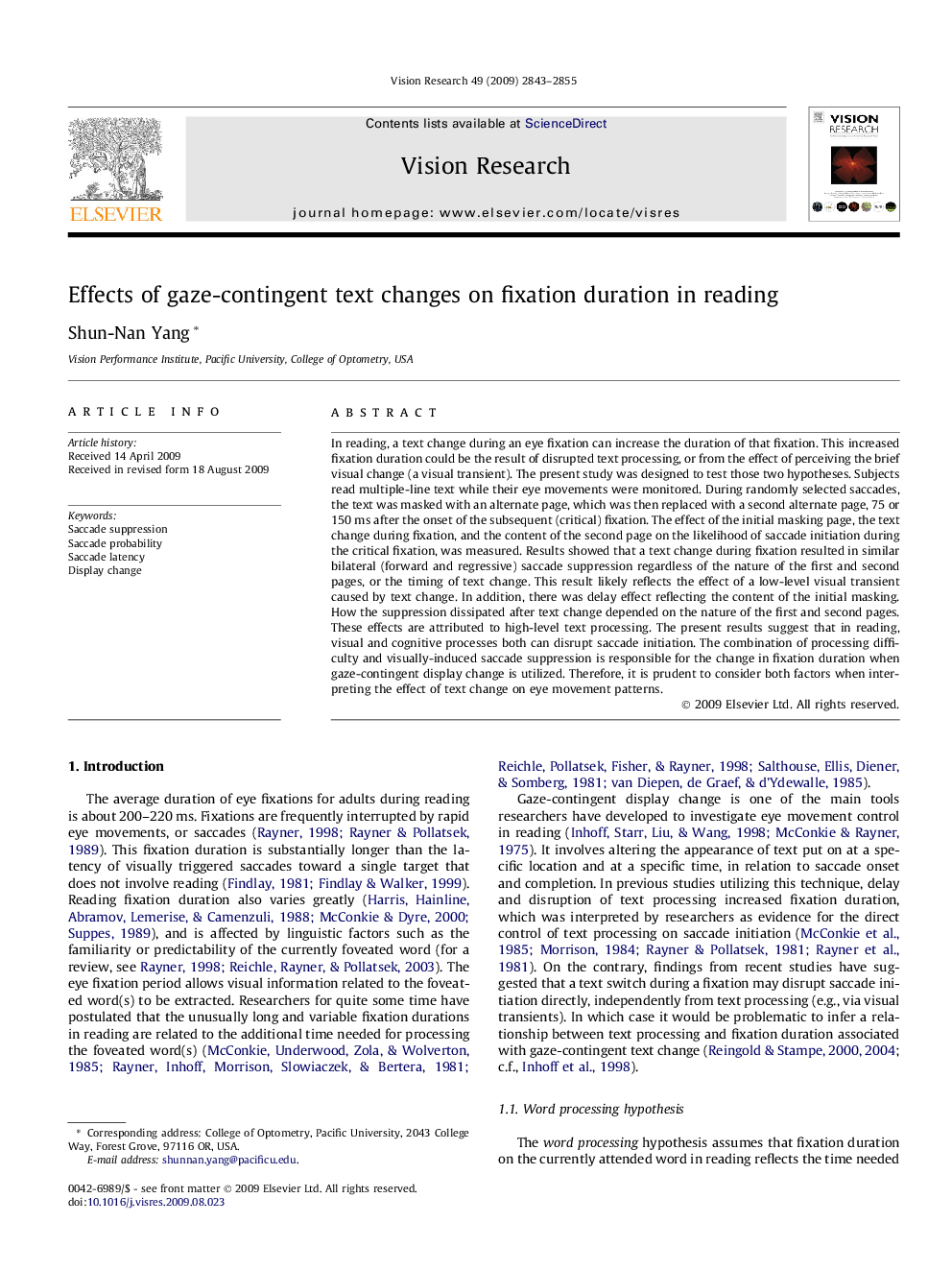| Article ID | Journal | Published Year | Pages | File Type |
|---|---|---|---|---|
| 4034982 | Vision Research | 2009 | 13 Pages |
In reading, a text change during an eye fixation can increase the duration of that fixation. This increased fixation duration could be the result of disrupted text processing, or from the effect of perceiving the brief visual change (a visual transient). The present study was designed to test those two hypotheses. Subjects read multiple-line text while their eye movements were monitored. During randomly selected saccades, the text was masked with an alternate page, which was then replaced with a second alternate page, 75 or 150 ms after the onset of the subsequent (critical) fixation. The effect of the initial masking page, the text change during fixation, and the content of the second page on the likelihood of saccade initiation during the critical fixation, was measured. Results showed that a text change during fixation resulted in similar bilateral (forward and regressive) saccade suppression regardless of the nature of the first and second pages, or the timing of text change. This result likely reflects the effect of a low-level visual transient caused by text change. In addition, there was delay effect reflecting the content of the initial masking. How the suppression dissipated after text change depended on the nature of the first and second pages. These effects are attributed to high-level text processing. The present results suggest that in reading, visual and cognitive processes both can disrupt saccade initiation. The combination of processing difficulty and visually-induced saccade suppression is responsible for the change in fixation duration when gaze-contingent display change is utilized. Therefore, it is prudent to consider both factors when interpreting the effect of text change on eye movement patterns.
